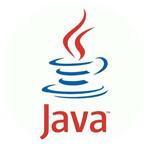Struts的include标签非常类似于jsp的include标签,它很少被使用。我们已经看到了如何使用<s:action>标签将struts action的输出包含到jsp中。而<s:include>标签略有不同,它允许你将jsp,servlet或任何其他资源(除了struts action之外的其他资源)的输出包含到jsp中。在幕后,它完全类似于<jsp:include>,但它允许你传递参数到包含的文件中,并且它也是Struts框架的一部分。
下面的示例显示了我们如何将HelloWorld.jsp的输出包含到employee.jsp中。在这种情况下,HelloWorldAction.java中的action方法将不会被调用,因为是直接包含了jsp。

下面的示例显示了我们如何将HelloWorld.jsp的输出包含到employee.jsp中。在这种情况下,HelloWorldAction.java中的action方法将不会被调用,因为是直接包含了jsp。
创建action类
- package com.w3xue.struts2;
- public class HelloWorldAction{
- private String name;
- public String execute() throws Exception {
- return "success";
- }
- public String getName() {
- return name;
- }
- public void setName(String name) {
- this.name = name;
- }
- }
创建视图
让我们创建包含以下内容的HelloWorld.jsp:接下来创建有以下内容的employees.jsp:
- <%@ page contentType="text/html; charset=UTF-8" %>
- <%@ taglib prefix="s" uri="/struts-tags" %>
- <html>
- <head>
- <title>Hello World</title>
- </head>
- <body>
- <h2>Example of Generator Tag</h2>
- <h3>The colours of rainbow:</h3>
- <s:generator val="%{'Violet,Indigo,Blue,
- Green,Yellow,Orange,Red '}" count="7"
- separator=",">
- <s:iterator>
- <s:property /><br/>
- </s:iterator>
- </s:generator>
- </body>
- </html>
- <%@ page contentType="text/html; charset=UTF-8"%>
- <%@ taglib prefix="s" uri="/struts-tags"%>
- <html>
- <head>
- <title>Employees</title>
- </head>
- <body>
- <p>An example of the include tag: </p>
- <s:include value="HelloWorld.jsp"/>
- </body>
- </html>
配置文件
你的struts.xml应该如下所示:你的web.xml应如下所示:
- <?xml version="1.0" encoding="UTF-8"?>
- <!DOCTYPE struts PUBLIC
- "-//Apache Software Foundation//DTD Struts Configuration 2.0//EN"
- "http://struts.apache.org/dtds/struts-2.0.dtd">
- <struts>
- <constant name="struts.devMode" value="true" />
- <package name="helloworld" extends="struts-default">
- <action name="hello"
- class="com.w3xue.struts2.HelloWorldAction"
- method="execute">
- <result name="success">/HelloWorld.jsp</result>
- </action>
- <action name="employee"
- class="com.w3xue.struts2.Employee"
- method="execute">
- <result name="success">/employee.jsp</result>
- </action>
- </package>
- </struts>
右键单击项目名称,然后单击“Export”> “WAR File”以创建WAR文件。然后在Tomcat的webapps目录中部署WAR文件。最后,启动Tomcat服务器并尝试访问URL http://localhost:8080/HelloWorldStruts2/employee.action,将显示以下界面:
- <?xml version="1.0" encoding="UTF-8"?>
- <web-app xmlns:xsi="http://www.w3.org/2001/XMLSchema-instance"
- xmlns="http://java.sun.com/xml/ns/javaee"
- xmlns:web="http://java.sun.com/xml/ns/javaee/web-app_2_5.xsd"
- xsi:schemaLocation="http://java.sun.com/xml/ns/javaee
- http://java.sun.com/xml/ns/javaee/web-app_3_0.xsd"
- id="WebApp_ID" version="3.0">
- <display-name>Struts 2</display-name>
- <welcome-file-list>
- <welcome-file>index.jsp</welcome-file>
- </welcome-file-list>
- <filter>
- <filter-name>struts2</filter-name>
- <filter-class>
- org.apache.struts2.dispatcher.FilterDispatcher
- </filter-class>
- </filter>
- <filter-mapping>
- <filter-name>struts2</filter-name>
- <url-pattern>/*</url-pattern>
- </filter-mapping>
- </web-app>

转载本站内容时,请务必注明来自W3xue,违者必究。






 优化或报错有奖
优化或报错有奖 皖公网安备34020702000426号
皖公网安备34020702000426号